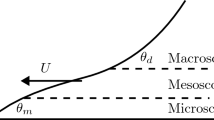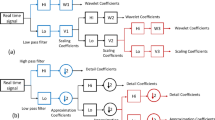Abstract
The purpose of this study was to develop a closed-loop machine vision system for wire electrical discharge machining (EDM) process control. Excessive wire wear leading to wire breakage is the primary cause of wire EDM process failures. Such process interruptions are undesirable because they affect cost efficiency, surface quality, and process sustainability. The developed system monitors wire wear using an image-processing algorithm and suggests parametric changes according to the severity of the wire wear. Microscopic images of the wire electrode coming out from the machining zone are fed to the system as raw images. In the proposed method, the images are pre-processed and enhanced to obtain a binary image that is used to compute the wire wear ratio (WWR). The input parameters that are adjusted to recover from the unstable conditions that cause excessive wire wear are pulse off time, servo voltage, and wire feed rate. The algorithm successfully predicted wire breakage events. In addition, the alternative parametric settings proposed by the control algorithm were successful in reducing the wire wear to safe limits, thereby preventing wire breakage interruptions.











Similar content being viewed by others
References
Ho KH, Newman ST, Rahimifard S et al (2004) State of the art in wire electrical discharge machining (WEDM). Int J Mach Tools Manuf 44(12/13):1247–1259
Mandal A, Dixit AR (2014) State of art in wire electrical discharge machining process and performance. Int J Mach Manu Mater 16(1):1–21
Ramakrishnan R, Karunamoorthy L (2008) Modeling and multi-response optimization of Inconel 718 on machining of CNC WEDM process. J Mater Process Technol 207:343–349
Mandal A, Dixit AR, Das AK et al (2016) Modeling and optimization of machining nimonic C-263 superalloy using multicut strategy in WEDM. Mater Manuf Process 31:860–868
Manjaiah M, Laubscher RF, Kumar A et al (2016) Parametric optimization of MRR and surface roughness in wire electro discharge machining (WEDM) of D2 steel using taguchi-based utility approach. Int J Mech Mater Eng 11(7):1–9
Senkathir S, Aravind R, Samson RM et al (2019) Optimization of machining parameters of Inconel 718 by WEDM using response surface methodology. Adv Manuf Process 37:383–392
Bergs T, Tombul U, Herrig T et al (2018) Analysis of characteristic process parameters to identify unstable process conditions during wire EDM. Procedia Manuf 18:138–145
Gamage JR, Desilva AKM (2016) Effect of wire breakage on the process energy utilisation of EDM. Procedia CIRP 42:586–590
Kawata A, Okada A, Okamoto Y et al (2017) Influence of nozzle jet flushing on wire breakage in 1st-cut wire EDM from start hole. Key Eng Mater 749:130–135
Melnik Y, Kozochkin M, Porvatov A et al (2018) On adaptive control for electrical discharge machining using vibroacoustic emission. Technologies 6:96–114
Kwon S, Yang MY (2006) The benefits of using instantaneous energy to monitor the transient state of the wire EDM process. Int J Adv Manuf Technol 27:930–938
Yan MT, Liao YS (1996) A self-learning fuzzy controller for wire rupture prevention in WEDM. Int J Adv Manuf Technol 11:267–275
Yan MT, Liao YS (1998) Adaptive control of the WEDM process using the fuzzy control strategy. J Manuf Syst 17:263–274
Liao YS, Woo JC (2000) Design of a fuzzy controller for the adaptive control of WEDM process. Int J Mach Tools Manuf 40:2293–2307
Bufardi A, Akten O, Arif M et al (2017) Towards zero-defect manufacturing with a combined online-offline fuzzy-nets approach in wire electrical discharge machining. WSEAS Trans Environ Dev 13:401–409
Caggiano A, Teti R, Perez R et al (2015) Wire EDM monitoring for zero-defect manufacturing based on advanced sensor signal processing. Procedia CIRP 33:315–320
Cabanes I, Portillo E, Marcos M et al (2008) On-line prevention of wire breakage in wire electro-discharge machining. Robot Comput Integr Manuf 24:287–298
Klocke F, Welling D, Klink A et al (2014) Quality assessment through in-process monitoring of wire-EDM for fir tree slot production. New Prod Technol Aerosp Ind-5th Mach Innov Conf (MIC 2014)-Procedia CIRP 24:97–102
Abhilash PM, Chakradhar D (2021) Chakradhar image processing algorithm for detection quantification and classification of microdefects in wire electric discharge machined precision finish cut surfaces. J Micromanuf. https://doi.org/10.1177/25165984211015410
Martínez SS, Vázquez CO, García JG et al (2015) Image fusion for surface finishing inspection. Int Conf Imaging Syst Tech Proc 2015:3–8
Frayman Y, Zheng H, Nahavandi S (2006) Machine vision system for automatic inspection of surface defects in aluminum die casting. J Adv Comput Intell Intell Informatics 10:281–286
Steiner D, Katz R (2007) Measurement techniques for the inspection of porosity flaws on machined surfaces. J Comput Inf Sci Eng 7:85–94
Khalifa OO, Densibali A, Faris W (2006) Image processing for chatter identification in machining processes. Int J Adv Manuf Technol 31:443–449
Manish R, Venkatesh A, Denis AS (2018) Machine vision based image processing techniques for surface finish and defect inspection in a grinding process. Mater Today Proc 5:12792–12802
Zhang C, Zhang J (2013) On-line tool wear measurement for ball-end milling cutter based on machine vision. Comput Ind 64:708–719
Tsai DM, Rivera MDE (2019) Morphology-based defect detection in machined surfaces with circular tool-mark patterns. Meas J Int Meas Confed 134:209–217
Reed RC (2006) The superalloys fundamentals and applications. Cambridge University Press
Ramamurthy A, Sivaramakrishnan R, Muthuramalingam T et al (2015) Performance analysis of wire electrodes on machining Ti-6Al-4V alloy using electrical discharge machining process. Mach Sci Technol 19:577–592
Maher I, Sarhan AAD, Hamdi M (2014) Review of improvements in wire electrode properties for longer working time and utilization in wire EDM machining. Int J Adv Manuf Technol 76:329–351
Thakur DG, Ramamoorthy B, Vijayaraghavan L (2009) Study on the machinability characteristics of superalloy Inconel 718 during high speed turning. Mater Des 30:1718–1725
Abhilash PM, Chakradhar D (2021) Failure detection and control for wire EDM process using multiple sensors. CIRP J Manuf Sci Technol 33:315–326. https://doi.org/10.1016/j.cirpj.2021.04.009
Abhilash PM, Chakradhar D (2020) Surface integrity comparison of wire electric discharge machined Inconel 718 surfaces at different machining stabilities. Procedia CIRP 87:228–233
Acknowledgment
The authors would like to thank the central instrumentation facility (CIF), IIT Palakkad, for providing the test facility and equipment.
Author information
Authors and Affiliations
Corresponding author
Rights and permissions
About this article
Cite this article
Abhilash, P.M., Chakradhar, D. Machine-vision-based electrode wear analysis for closed loop wire EDM process control. Adv. Manuf. 10, 131–142 (2022). https://doi.org/10.1007/s40436-021-00373-y
Received:
Revised:
Accepted:
Published:
Issue Date:
DOI: https://doi.org/10.1007/s40436-021-00373-y




